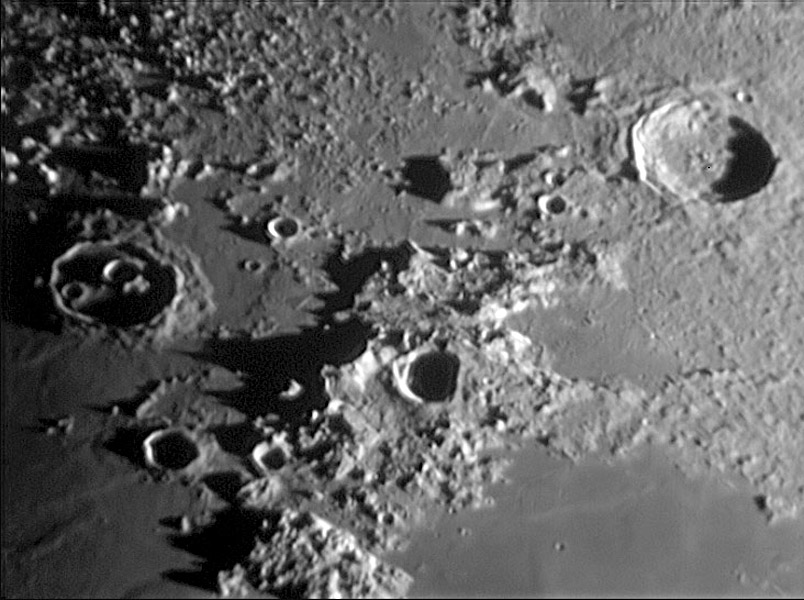
image by Gerardo Sbarufatti
The lunar Caucasus Mountains jut up like an upraised index finger. They seem to be part of the Imbrium basin rim but because they aren’t concentric with the basin their origin or modification is poorly understood. One of the oddest landforms of this region is the feature given the name Alexander. The name was given by William Birt in the late 1800s, who must have thought that it was a degraded crater. In his 1876 book, The Moon Edmund Neison called it a great irregular depression, which is a more appropriate description than the word crater. In fact, we should ask if Alexander ever was a crater. Gerardo’s image shows that it is an elongated depression with a high and blocky rim to the west which declines toward the east where it totally disappears. The overhead perspective of a Lunar Orbiter image demonstrates that it is not at all circular. Also, the western “rim” does not look like a crater rim (compare with Eudoxus above) as much as the blocky massifs of the Caucasus. But Alexander is a depression, and almost the only way to make a depression on the Moon is by cratering. If Alexander were originally an impact crater, it was covered by Imbrium’s rubble-like debris, and later a veneer of light-hued mare basalt hid the ejecta. If it is a crater, a Clementine image suggests a diameter about the same as Eudoxus (65-70 km), not the 82 km that is listed in catalogs. But I don’t know if Alexander ever was a crater - what do you think?
Technical Details:
Feb 5, 2006, 18:48 UT. 8″ SCT Celestron + 2X Barlow + KamPro02 camera + 5,500 red filter; 700 stacked images.
Related Links:
Rükl sheet 13
Yesterday's LPOD: Oozing Ejecta
Tomorrow's LPOD: Little Magazines
COMMENTS?
Register, Log in, and join in the comments.



